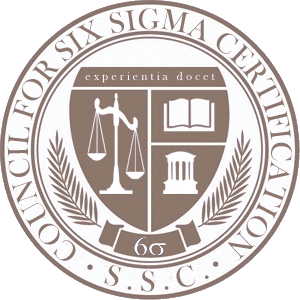Description
This online Lean Six Sigma Green Belt certification prepares you to lead and execute Lean Six Sigma projects, perform the analysis associated with Lean Six Sigma projects, and use the D.M.A.I.C to successfully solve problems.
Lean Sigma Corporation’s Green Belt certification is a complete online training that can be navigated at your own pace. The Green Belt certification is comprised of professionally narrated eLearning modules, interactive quizzes throughout lessons, D.M.A.I.C Phase chapter tests, and a final certification exam. All delivered through a system that you will have access to 24 hours a day, 7 days a week. Course Access for all programmes is 12 months from date of purchase.
Training Features
- eLearning Professionally Developed
- 17 Engaging Quizzes
- Test for each D.M.A.I.C Phase
- Six Sigma Green Belt Certification Exam
- 98% Satisfaction Rating
- More than 500 Certifications awarded
System Features
- Minitab ® Statistical Software – 12 Months License
- Continuing System Access
- 24/7 Online Access to Portal
- Messaging via Internal System
- Forum and Glossary for Reference
- Additional Study Units
- Exercises for continued learning
Six Sigma Green Belt Certification Requirements
- Review All eLearning Modules & Quizzes
- Pass All Five D.M.A.I.C. Tests (80% or better)
- Pass Certification Exam (80%, 2 Attempts)
- Complete Required Course Feedback
Accreditation

Our Lean Six Sigma Black Belt certification will be recognized industry wide! Earning your certification from MBizM Group means you have successfully demonstrated mastery of the Lean Six Sigma body of knowledge consistent with all industry recognized certification providers. Our content and body of knowledge is aligned to ASQ, IASSC and more importantly, accredited by the Council for Six Sigma Certification.
The Council for Six Sigma Certification is a professional association devoted to ensuring that curriculum providers and training programs maintain minimum standards for both Six Sigma certification and Lean Six Sigma certification. The Council provides accreditation services to more than 165 countries around the world and have accredited numerous universities, 3rd party training firms, consultants and individual trainers.
Please click this link to book your CSSC exam Council For Six Sigma Certification (CSSC)
Minitab ® Statistical Software – 12 Months License

Minitab ® Statistical Software gives you the tools need to analyze your data and make informed decision about how to improve your business. Its power and ease of use make it the leading package used for quality improvement and statistics education worldwide.
- Minitab ® is a comprehensive Statistics Software which is perfect for quality and process improvement, including six sigma
- It is Accurate, Reliable and Easy to Use
You get a 12 month timed-version of Minitab training license which includes:
- 12 month timed-version license to use Minitab
- Single User Copies
- Free technical support via email or phone
- Minitab Introductory manual provided online
- Software via electronic delivery
- Software installer to be downloaded at www.minitab.com
- End user info to be disclosed upon order confirmation
Six Sigma Green Belt Certification: Curriculum
DEFINE PHASE
1.1 Overview of Six Sigma
1.1.1 What is Six Sigma?
1.1.2 Six Sigma History
1.1.3 Six Sigma Approach
1.1.4 Six Sigma Methodology
1.1.5 Roles & Responsibilities
1.2 Fundamentals of Six Sigma
1.2.1 Defining a Process
1.2.2 VOC & CTQ’s
1.2.3 QFD
1.2.4 Cost of Poor Quality
1.2.5 Pareto Chart & Analysis
1.3 Lean Six Sigma Projects
1.3.1 Six Sigma Metrics
1.3.2 Business Case & Charter
1.3.3 Six Sigma Metrics
1.3.4 Project Team Selection
1.3.5 Project Risk Management
1.3.6 Project Planning
MEASURE PHASE
2.1 Process Definition
2.1.1 Cause & Effect Diagrams
2.1.2 Cause & Effect Matrix
2.1.3 Process Mapping
2.1.4 FMEA
2.1.5 Theory of Constraints
2.2 Six Sigma Statistics
2.2.1 Basic Statistics
2.2.2 Descriptive Statistics
2.2.3 Distributions & Normality
2.2.4 Graphical Analysis
2.3 Measurement Systems
2.3.1 Precision & Accuracy
2.3.2 Bias, Linearity, Stability
2.3.3 Gage R & R
2.3.4 Variable MSA
2.3.5 Attribute MSA
2.4 Process Capability
2.4.1 Capability Analysis
2.4.2 Concept of Stability
2.4.3 Attribute Capability
2.4.4 Monitoring Techniques
ANALYZE PHASE
3.1 Inferential Statistics
3.1.1 Understanding Inference
3.1.2 Sampling Techniques
3.1.3 Sample Size
3.1.4 Central Limit Theorem
3.2 Hypothesis Testing
3.2.1 Goals of Hypothesis Tests
3.2.2 Statistical Significance
3.2.3 Risk: Alpha & Beta
3.2.4 Types of Hypothesis Tests
3.3 Hypothesis Tests: Normal
3.3.1 1 Sample t-test
3.3.2 2 Sample t-test
3.3.3 1 Sample Variance
3.3.4 One Way ANOVA
3.3.5 Test of Equal Variance
3.3.6 Normality Tests
3.3.7 Sample Size Calcs
3.4 Hypo Tests: Non-Normal
3.4.1 Mann-Whitney
3.4.2 Kruskal-Wallis
3.4.3 Mood’s Median
3.4.4 Friedman
3.4.5 1 Sample Sign
IMPROVE PHASE
4.1 Simple Linear Regression
4.1.1 Correlation
4.1.2 XY Diagram
4.1.3 Regression Equations
4.1.4 Residuals Analysis
4.2 Multiple Regression
4.2.1 Non-Linear Regression
4.2.2 Multiple Regression
4.2.3 Confidence Intervals
4.2.4 Residuals Analysis
4.2.5 Data Transformation
4.2.6 Stepwise Regression
4.2.7 Logistic Regression
CONTROL PHASE
5.1 Lean Controls
5.1.1 Control Methods for 5S
5.1.2 Kanban
5.1.3 Poka-Yoke
5.2 SPC
5.2.1 SPC Data Collection
5.2.2 Xbar-R Chart
5.2.3 Xbar-S Chart
5.2.4 U Chart
5.2.5 C Chart
5.2.6 P Chart
5.2.7 NP Chart
5.2.8 CumSum Chart
5.2.9 EWMA Chart
5.2.10 Control Methods
5.2.11 Control Chart Anatomy
5.2.12 Subgrouping & Sampling
5.2.13 Control Limit Calcs
5.3 Control Plans
5.3.1 Cost Benefit Analysis
5.3.2 Elements of Control Plans
5.3.3 Elements of Response Plans


Reviews
There are no reviews yet.